How to Create an SEO Roadmap: The Ultimate Guide (Free Template Included)
Creating a successful SEO strategy requires considerable effort and coordination between different teams. That’s why it’s important to have a clear plan with deadlines, key goals, and tasks. It keeps all parties involved focused and working cohesively toward the main goal.
This is where SEO roadmaps come in handy. These documents are essential because they show you the website’s trajectory, and the steps you’d need to take to get there, including actionable tasks and scalable workflows.
In this post, we will discuss why SEO roadmaps are important, how to build them, and which projects can be done within them.
You can also download our free SEO roadmap template and use it now.
What is an SEO roadmap?
An SEO roadmap is a strategic plan delineating the steps and actions necessary for improving a website’s visibility in SERPs. It comprises detailed tasks with priorities, assigned individuals, and target deadlines. It is created at the project or campaign’s outset to provide a clear overview of the plan. This helps coordinate efforts effectively.
Now, let’s explore why it is so critical to have an SEO roadmap.
What are the benefits of an SEO roadmap?
A roadmap is valuable for any campaign as it helps in addressing important planning tasks and achieving specific goals. It paves a clear path for stakeholders to collaborate effectively on business and SEO goals, achieve maximum ROI, and keep SEO initiatives on track. Let’s look closely at the main benefits of using an SEO roadmap.
1. Matching SEO efforts with business goals. An SEO roadmap serves as a strategic blueprint, ensuring that every effort directly aligns with overarching business objectives. For instance, if a client’s primary goal is to increase online sales, the SEO roadmap would prioritize initiatives like optimizing product pages, implementing conversion rate optimization strategies, and enhancing user experience to drive more purchases.
2. Getting all collaborators on the same page. In an agency setting, different teams such as SEO specialists, content creators, web developers, and marketers must work in harmony to achieve a successful SEO campaign. The SEO roadmap acts as a central document that brings these cross-functional teams together by clearly outlining each role and responsibility. For example, the SEO specialists may be responsible for keyword research and on-page optimization, while the content team focuses on creating high-quality SEO-friendly content. This is also a great way to inform all interested parties about plans and processes.
3. Optimizing SEO efforts for maximum ROI. By clearly planning all task details, you can anticipate outcomes in advance and ensure that all efforts and resources pay off as much as possible.
4. Maintaining full control over your SEO strategy. Using the roadmap as a guide, you can craft concrete plans that effectively lead toward your desired outcome. The roadmap includes specific parameters like timeframe, brief, priority, and task status to enable better tracking and evaluation of progress. This helps you identify what’s working and what needs adjustment.
SEO roadmap vs. SEO strategy: What’s the difference?
The SEO strategy defines the general goals and approach, while the SEO roadmap breaks down the steps required to execute that strategy. The roadmap also provides a detailed plan with specific actions, milestones, and timelines. The strategy is essentially the “what” (core goals) and the “why” (value to the business) of SEO, while the roadmap is the “how” (action items) and “when” (timelines and urgency based on priority).
You can’t have an effective SEO roadmap without a strategy, and executing a strategy effectively is not possible without a roadmap. Both tools work in tandem. Each is essential for teams to reach SEO goals and achieve measurable outcomes.
How to create an SEO roadmap
To craft an effective SEO roadmap, analyze the website’s overall performance. Consider the company’s business goals and identify the primary tasks for the teams to focus on. Then, divide these tasks between teams and create a detailed plan for each task. Don’t forget to regularly monitor each team’s progress. Update or adjust your roadmap as needed.
As you can see, there are multiple stages involved in creating a roadmap for SEO. Each is crucial to establishing effective and coordinated work.
Let’s take a closer look at each step.
Assess your current situation
To kickstart your SEO roadmap strategy, start by carefully evaluating its current standing. A bird’s-eye view of the website’s optimization status will guide you on which tasks to include in the SEO roadmap.
Begin by conducting a comprehensive audit of your website. Identify its strengths, weaknesses, opportunities, and threats. Specialized tools can automate the audit process, providing you with a ready-made list of areas to improve. This assessment aids in evaluating technical SEO health, off-page and on-page optimization, etc.
In this section, we’ll discuss how to conduct these analyses using SE Ranking.
This data makes informed decision-making possible, specifically around setting goals and prioritizing the tasks that need to be accomplished to achieve them.
Consider your business goals
All tasks included in your roadmap should match the company’s main objectives. Don’t incorporate tasks into the roadmap that aren’t pertinent or beneficial to the business, even if they have the potential to improve certain SEO metrics.
The bottom line? Don’t spread your resources thin if you don’t need to.
For example, if your goal is to increase online sales, focus your website optimization efforts on improving product pages, streamlining the checkout process, and implementing persuasive call-to-action buttons. Or, if your goal is to attract more visitors to your local shop, optimize your Google Business Profile, include it in different listings, analyze comments, etc.
Understanding your business goals also allows you to articulate those benefits to the client when getting work done.
Define your key tasks
The next essential step is to create a to-do list of all the tasks that must be completed to achieve your desired result by the end of the SEO campaign. They should be based on the goals listed in your SEO strategy.
For example, if your goal is to increase website traffic by 20% within the next quarter, your task list might include:
- Optimizing the meta titles and descriptions of key landing pages.
- Improving site speed by optimizing images and minimizing code.
- Creating new blog content that targets high-volume keywords.
- Implementing a backlink outreach campaign to acquire authoritative links.
The next important step is to know how granular certain tasks should be. They should neither be too big and overwhelming nor too small and insignificant. For instance, you wouldn’t want to include “Fix a broken link in the footer.” But “Conduct a comprehensive audit of all website links and resolve any issues” might be too extensive.
Finding the middle ground is key. For example, you can break down the link analysis task into smaller components such as “Conduct internal linking analysis of a website blog”, “Conduct internal linking analysis of product pages”, “Update footer and sidebar links”, and so on. If needed, you can consult with the team responsible for carrying out this task to determine its scale, and if completing it is feasible within the set timeframe.
Once you have settled on your tasks, add them to the appropriate column in your SEO roadmap document.
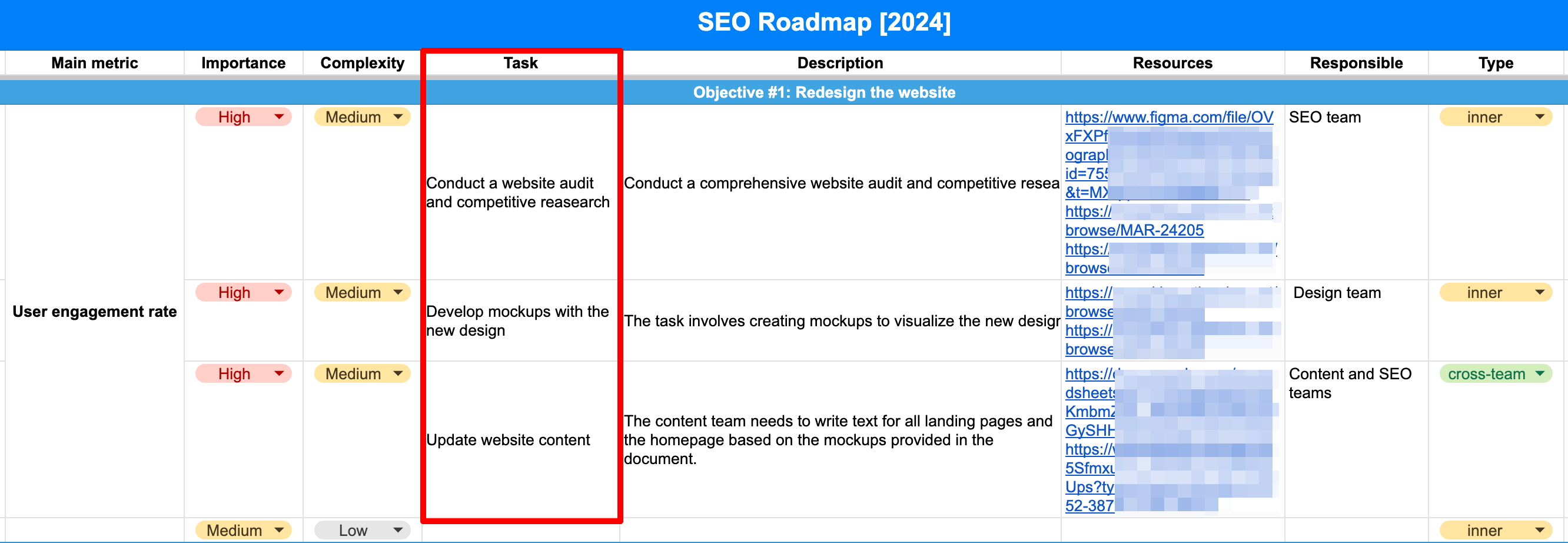
Prioritize
Once you’ve identified the most important tasks, prioritize them based on their potential impact and urgency.
Let’s look at how to organize an SEO roadmap by task priority.
Importance and complexity
The first way to prioritize tasks is to evaluate their importance and complexity. Tasks that are very important but have low complexity should be prioritized first. Tasks that are less important or have higher complexity can be put on the back burner.
To help illustrate how this works, feel free to refer to this user-friendly matrix:
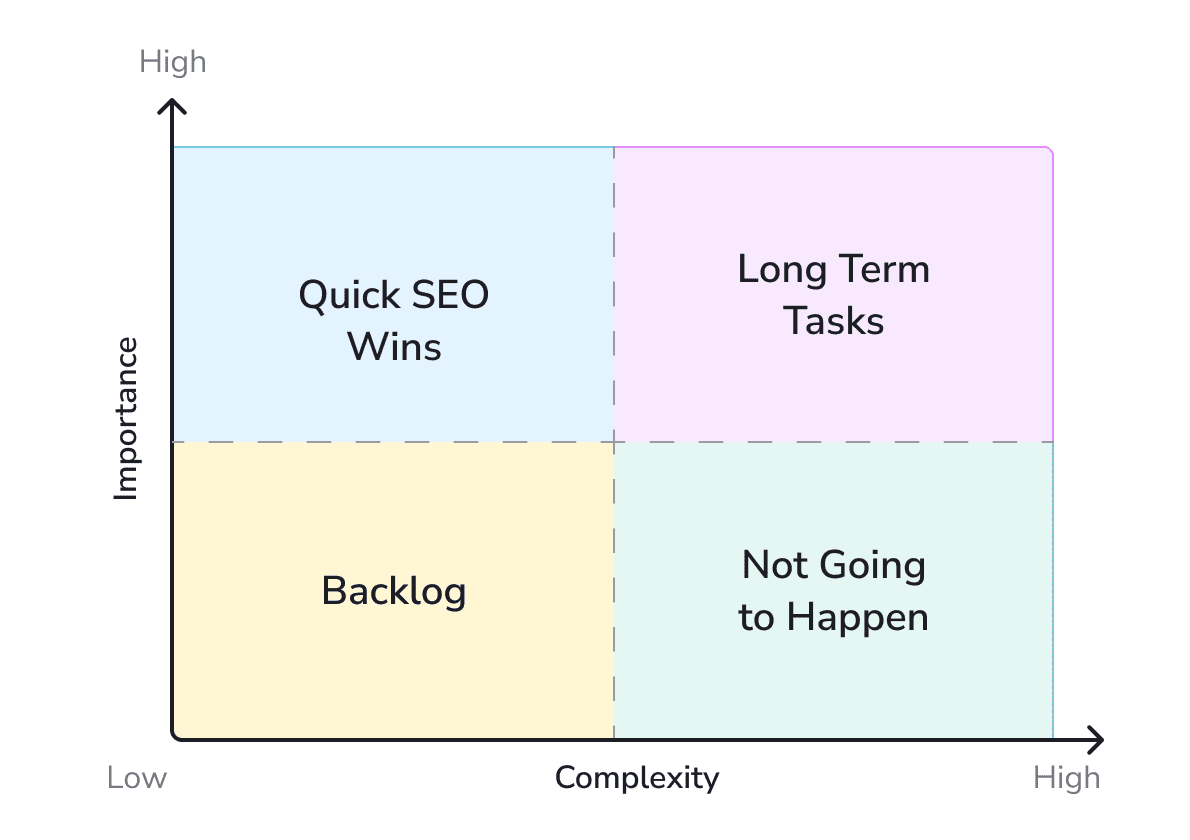
According to this matrix, you can divide all your tasks into 4 categories:
- Not going to happen: These tasks demand substantial effort but yield little to no positive results. They should be considered the lowest priority and might not be possible to tackle right now.
- Backlog: These are simple tasks with low impact. While they are not a priority, they can be addressed when time allows or after other higher-priority tasks are completed.
- Long-term tasks: Tasks in this category are resource-heavy but vital. Because they’re so important, they need to be given priority and allotted sufficient time and resources to ensure they’re done well.
- Quick SEO wins: These are high-impact tasks that can be done quickly. They should be given the highest priority. Numerous quick wins are available for your website, such as adding structured data for rich snippets, identifying “low-hanging fruit” keywords, optimizing anchor texts, etc. Review your task list to identify tasks that can be completed quickly and yield good results.
You can easily select Importance and Complexity in SE Ranking’s SEO roadmap template. Drag and drop the rows within Google Sheets to place the high-priority tasks at the top of the roadmap.
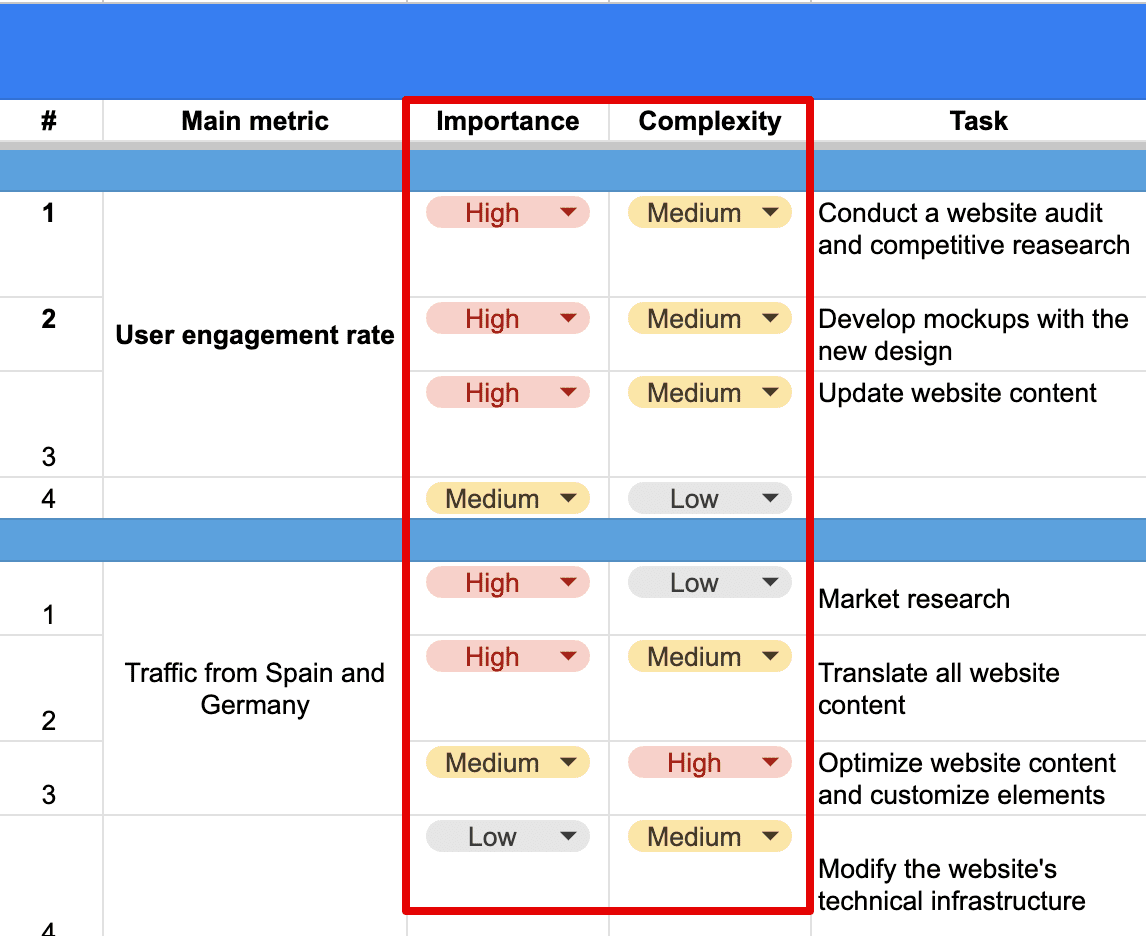
Competitive landscape
When prioritizing tasks, look beyond your site by observing competitors’ strategies. Identify areas where you outshine your competitors, where they outperform you, and where there are gaps in the market.
Maybe your landing page needs a little more work to outperform the competitor appearing at the top of the search results. It’s also possible that your competitors’ websites have better Core Web Vitals or are more user-friendly. Review the competitive landscape in each SEO area (off-page, on-page, technical, local SEO) to identify tasks that shouldn’t be put off. Delaying them could jeopardize your position and overall competitiveness in the market.
Note: When arranging tasks, consider not only their priority but also whether some tasks are dependent on the completion of previous tasks on the list.
Plan workflows and assign tasks
Now that you’ve included all tasks in your SEO roadmap and sorted out their priority levels, the next step is to plan workflows and assign tasks to team members. Ensure the roadmap is executed smoothly by outlining clear responsibilities, deadlines, and expectations.
Each task should include a detailed description and an effective workflow that outlines the steps that the person responsible needs to take to complete it. The workflow will vary depending on the task, so there is no one-size-fits-all formula. However, let’s consider an example to help you understand how it might look.
Imagine that you are optimizing product descriptions for an ecommerce website. Here’s an example workflow for this task:
- Conduct keyword research to identify relevant keywords for each product.
- Develop a content brief that outlines each product’s key features, benefits, and unique selling points.
- Assign content briefs to copywriters.
- Review and provide feedback on the initial drafts received from the writers.
- Finalize and publish the updated product descriptions on the website.
A good workflow clearly explains the steps and helps you identify which teams and how many colleagues to involve in the task. It also helps you figure out how long the project will take to complete and if you have enough resources available. You may need to hire freelancers or adjust the deadlines of the SEO campaign.
After finalizing the workflow, delegate tasks to the appropriate team or colleagues. These individuals will be responsible for its completion within the specified timeframe. The next step is to add time estimates to your roadmap tasks.
Add time estimates
Since you have already set priority levels for each task, you should already have a rough idea of how long each task should take to complete.
To add time estimates to the roadmap, enter the number of days in the appropriate month column. Stick to half-day or full-day intervals. Anything more specific, such as hourly, can overcomplicate the roadmap and overwhelm your teams. If your roadmap contains too many small tasks, consider consolidating them into larger ones.
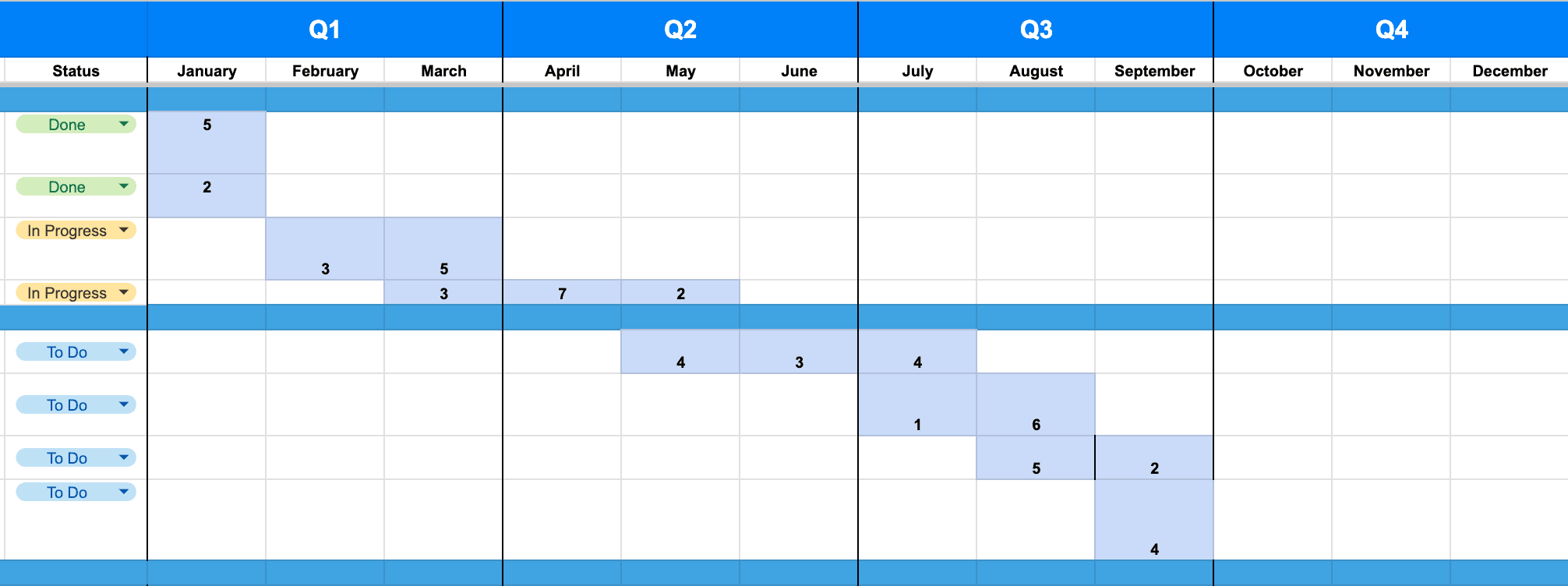
Don’t forget to consult with team members to ensure they have enough time to complete their assigned tasks.
Arrange your time estimates in a Gantt-style format, ensuring that the roadmap flows diagonally from the top left to the bottom right corner. This layout makes it easier for you and your teams to follow the roadmap. While it may not always be perfectly straight and may deviate slightly, this approach provides a clear visual guide for progress tracking.
Monitor your performance
Constant improvements are the key to any successful SEO strategy. To improve, you must continually measure your website’s performance in search results. Regularly monitor your SEO performance against predefined metrics and KPIs outlined in your SEO roadmap. Track changes in search engine rankings, website traffic, conversion rates, and other relevant indicators to gauge the effectiveness of your efforts.
Depending on your goals, you can utilize different tools to monitor outcomes. For instance, if your primary objective is to boost traffic or improve page engagement, Google Analytics is useful. On the other hand, if your focus is on improving rankings, tools like Google Search Console or other SEO platforms such as SE Ranking can provide valuable insights into keywords, pages, and other ranking metrics.
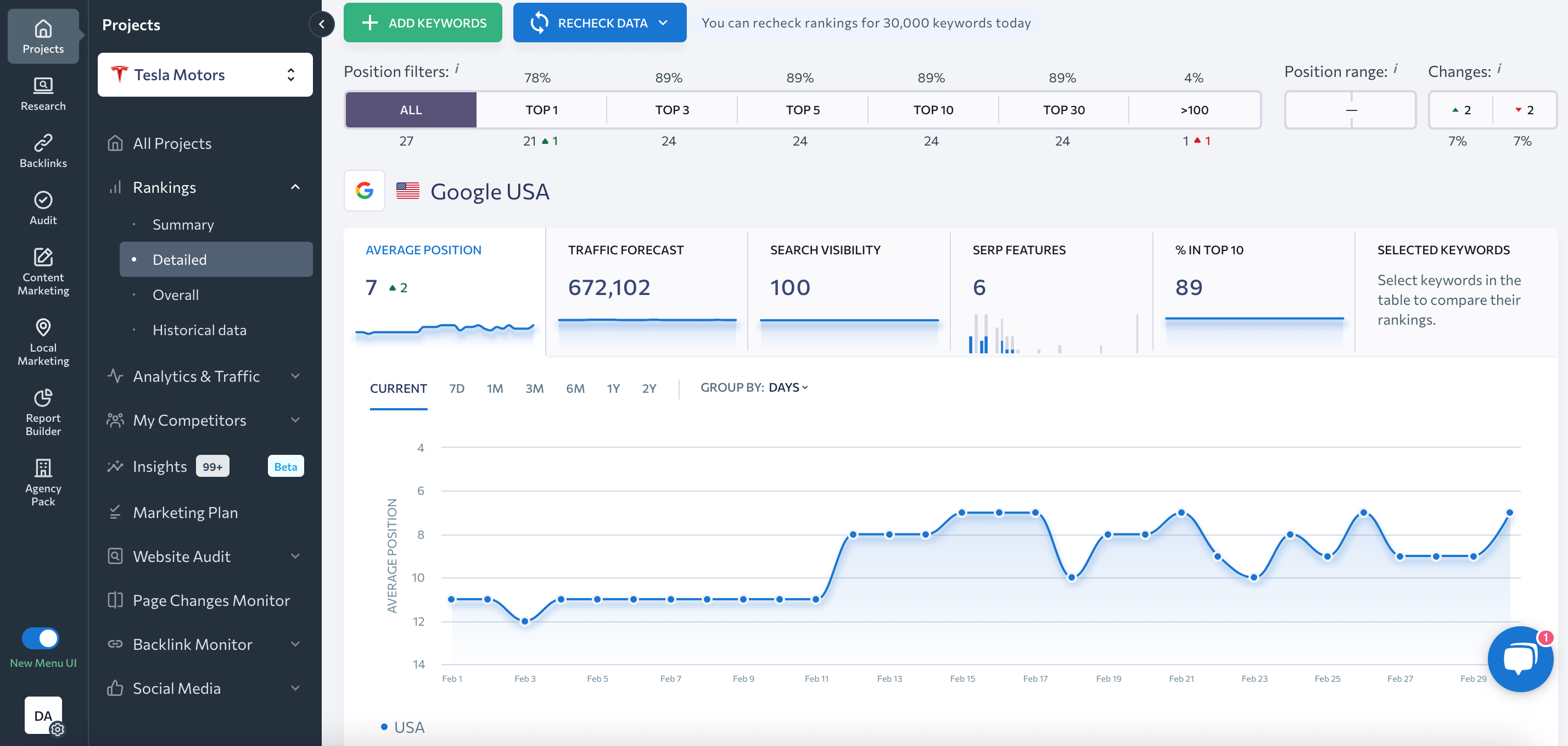
Monitoring your SEO results provides valuable insights into your business’s most effective techniques and strategies. This allows you to refine your roadmap by removing tasks that haven’t yielded results, giving more attention to successful ones, and incorporating new tasks that stir fresh approaches for achieving better outcomes.
Revise and update your roadmap
The SEO roadmap is a “living” document. This means it requires regular revision and updating, acting as an accurate guide for your team’s ongoing task progress. Don’t forget to update task statuses, add notes or new details, and include links to relevant resources. If necessary, consider reassigning tasks to different team members. An effective roadmap should always accurately reflect the current state of affairs.
Secondly, update the roadmap regularly after seeing the performance results to assess each task’s effectiveness. Based on these insights, you may need to adjust your planned strategies and consequently, your SEO roadmap. Stay flexible and change priorities based on what you learn along the way. If a task proves to be more challenging than expected, consider shifting your focus to tasks that offer quicker wins.
Examples of SEO roadmap initiatives
The roadmap can be created for almost any SEO task. Let’s look at a few popular initiatives to include in your SEO roadmap.
Website redesign
A website redesign can significantly impact SEO by improving user experience, site speed, and mobile responsiveness. This initiative might involve updating the website’s design, optimizing navigation, and enhancing accessibility.
In the roadmap, you can specify which metric you want to impact the most with this task. The metric could be user engagement rate, conversion rate or time spent on the page. After specifying the primary metric, describe the objective and its details. It will likely consist of tasks such as:
- Conducting a website audit and competitive analysis to gather insights into user behavior and preferences.
- Developing mockups with the new design.
- Updating website content.
- Conducting usability testing to validate the effectiveness of the redesign.
- Launching the new design.
- Monitoring website performance post-launch, analyzing key metrics such as traffic, engagement, and conversion rates.
This is a simplified and general workflow. Yours should be as detailed as possible.
Divide this objective into as many tasks as you want if it’s too extensive. This is a good idea for large websites.
It would also be useful to add, for example, design references, such as links to Figma showcasing the design’s ideal aesthetics, related tasks, etc.
After that, assign priority, responsibility, and deadlines. The design, SEO, content and development teams are typically responsible for these tasks.
Here’s how it might look in SE Ranking’s SEO roadmap template:
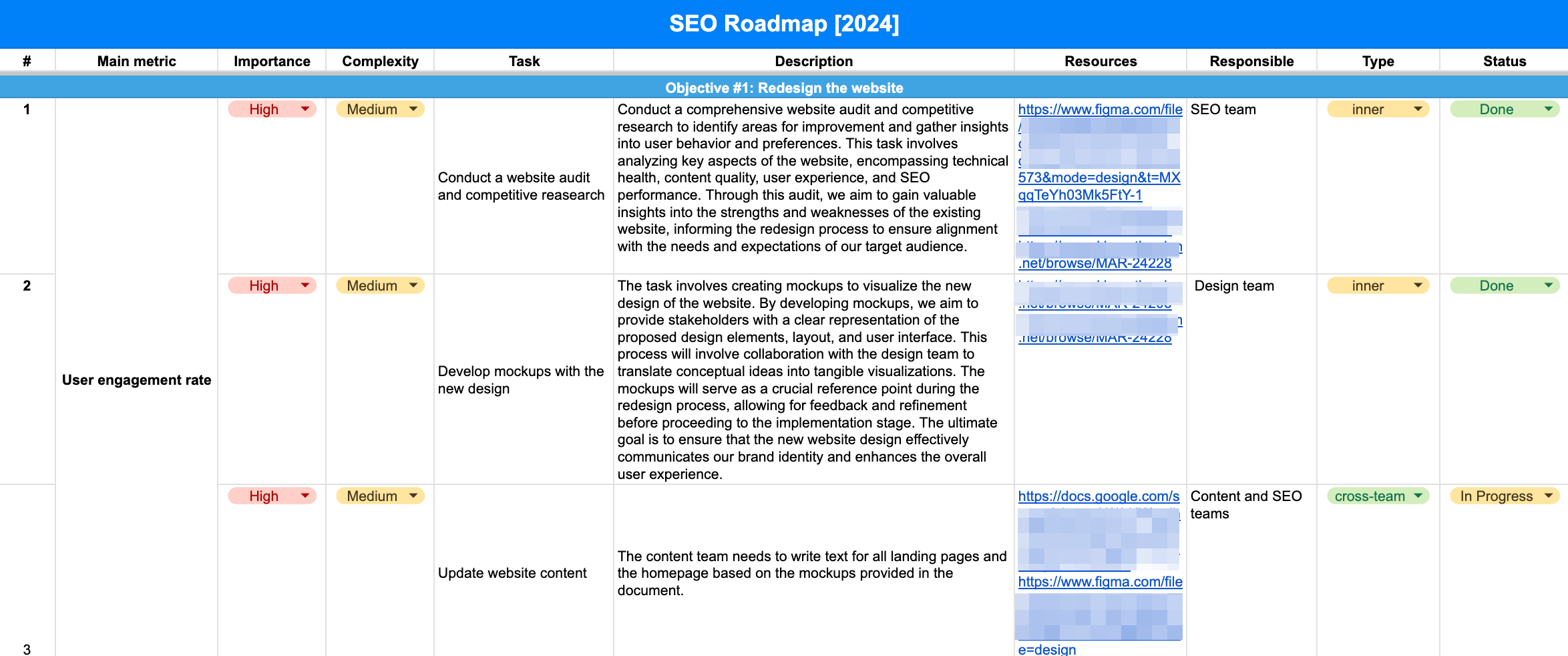
Website localization
Website localization can be a crucial SEO factor if your business operates in multiple regions or languages. This initiative involves tailoring content, keywords, and metadata to specific geographic regions or language preferences, improving visibility in local search results.
This initiative’s main goal is to increase traffic from appropriate countries. The generalized workflow can look like this:
- Conduct in-depth research to understand the preferences, cultural nuances, and users’ language requirements in specified countries.
- Translate all website content, including text, images, and multimedia elements, into necessary languages.
- Incorporate relevant keywords, meta tags, and region-specific SEO strategies.
- Include language-specific URLs, hreflang tags, and CDNs.
- Launch localized versions of the website.
This task can also be divided into several smaller tasks when needed.
This task involves multiple teams. Expect to assign it to the SEO, content, and development teams.

Adding new landing pages
Creating new landing pages, each targeted at specific keywords, can boost organic traffic and conversions. When using the performance of your targeted landing pages as a measure of success, one of these parameters might be your key metric.
Here is a potential generalized workflow for this initiative:
- Research relevant keywords with specialized tools like Google Trends, Keyword Planner, and SE Ranking.
- Create a brief and content for the landing page.
- Design the layout and structure of the landing page to optimize user experience and encourage conversions.
- Implement on-page SEO elements, including meta titles, meta descriptions, and internal linking.
- Launch the new landing page on the website and monitor its performance.
These tasks require a detailed description of the landing page’s ideal presentation. Adding a brief to your roadmap around the text content and a Figma design with the page’s structure is good practice. This is a cross-team objective that requires the combined efforts of the SEO, development, content, and design teams, so be sure to specify who is responsible for what.

No matter the SEO project, there will be numerous tasks. It’s up to you to sufficiently describe each task, assign responsibility, and set priority levels. Use our examples as a foundation and reference point for filling out your own roadmap.
How SE Ranking can help you build an SEO roadmap
As discussed earlier, conducting a comprehensive SEO analysis is crucial for identifying and prioritizing tasks. SE Ranking offers a powerful suite of essential tools to assist with this analysis. Here are a few of them:
- SEO Audit tool: SE Ranking’s detailed website audit feature provides a comprehensive analysis of your website’s technical SEO health. It covers areas such as security, Core Web Vitals, crawling, duplicate content, usability, etc. It also provides tips for resolving identified issues. This data is great for pinpointing aspects that should be improved and crafting tasks for your roadmap.
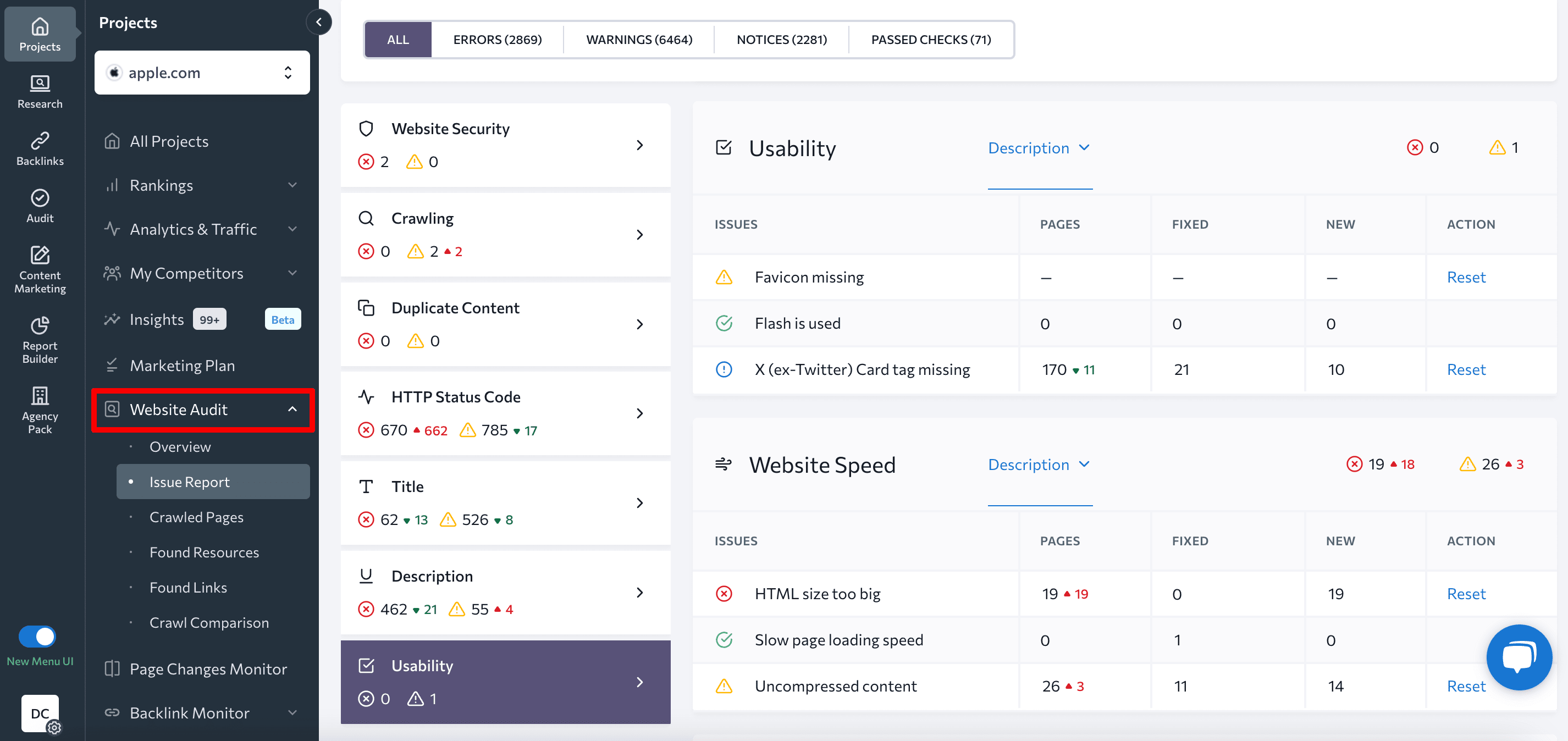
- Competitor Checker: As mentioned above, understanding your competitors’ SEO strategies is an essential part of building a successful roadmap. This tool allows you to compare your keywords, rankings, traffic, ads, historical data, and other SEO metrics with your competitors. It aids in identifying tasks to prioritize, ensuring you avoid losing positions in search results and stay ahead of competitors.
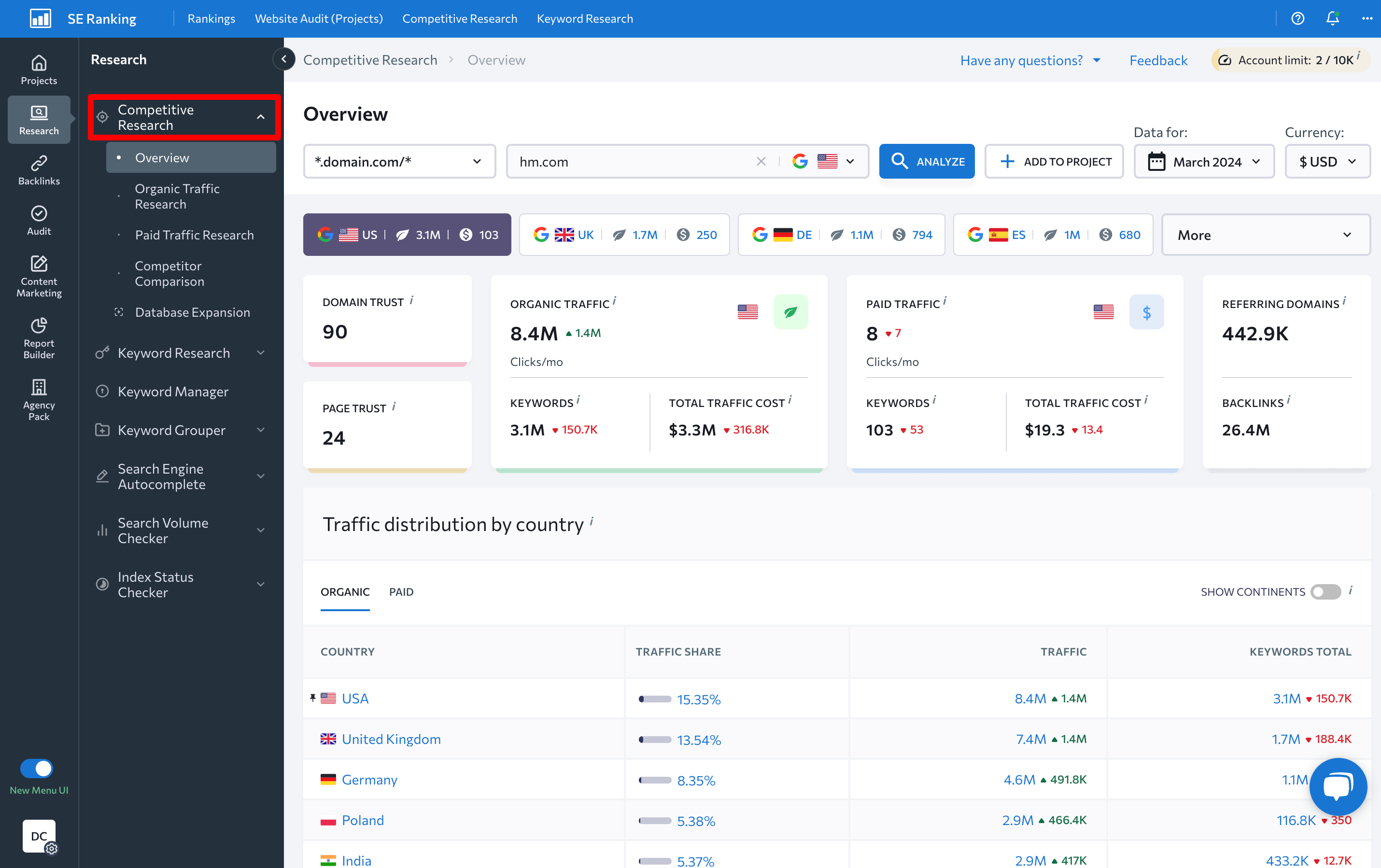
- SERP Analyzer. This is another tool for analyzing competitors’ website performance data. It gathers SERP data for any keyword and offers insights into the strengths and weaknesses of top-ranking pages. These insights include factors like page quality score, page experience metrics, domain authority score, and content parameters. Understanding these metrics helps you understand which areas to focus on to get top positions in search results. This makes it easier to identify roadmap tasks that contribute to reaching this goal.
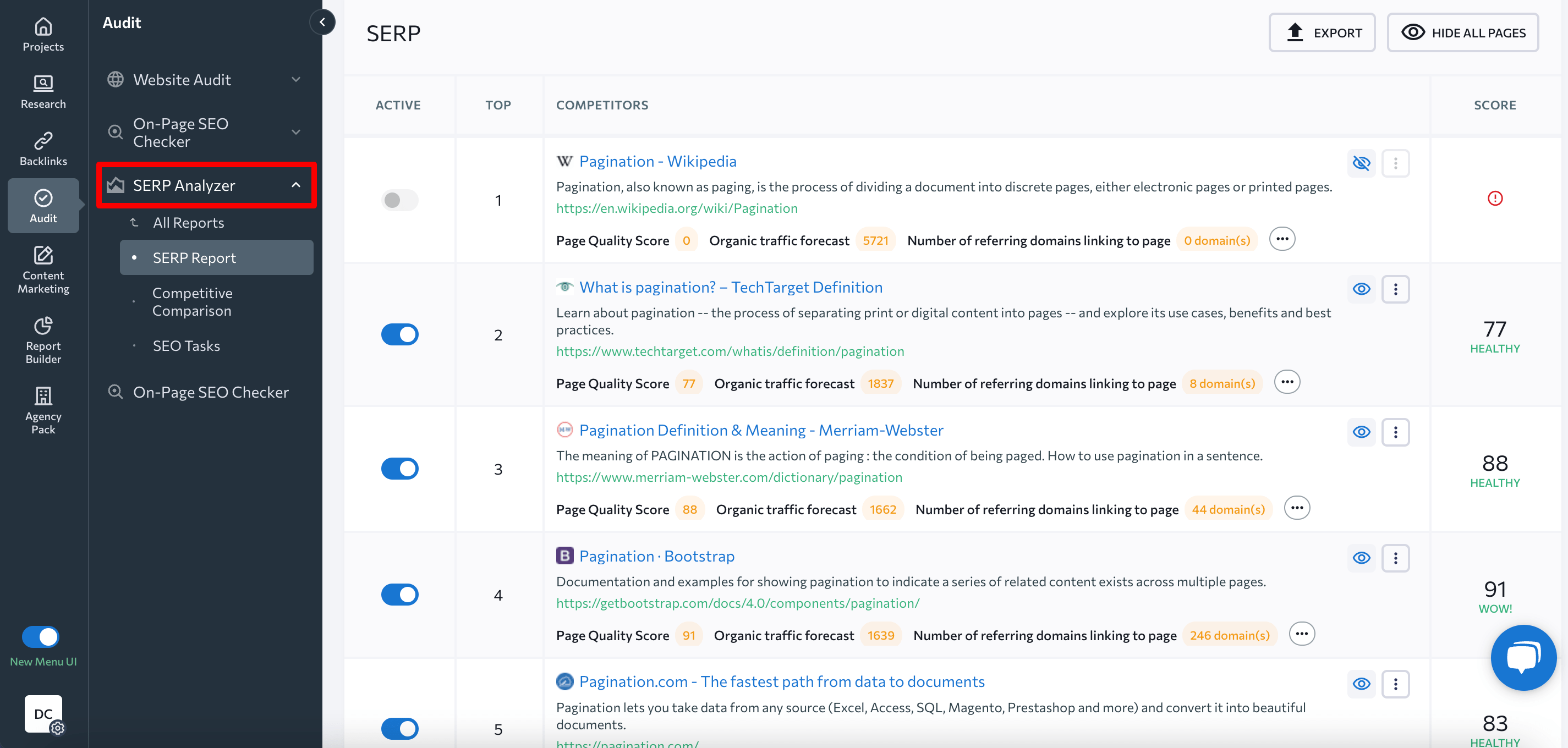
- Backlink Checker: Backlinks are a critical factor in SEO, and SE Ranking offers a powerful link building tool to help you analyze any website’s backlink profile. It provides data on domain authority, toxic backlinks, referring domains, and the most linkable pages and anchor texts. These insights will help you identify areas for growth in your off-page SEO strategy and create tasks for the roadmap accordingly.
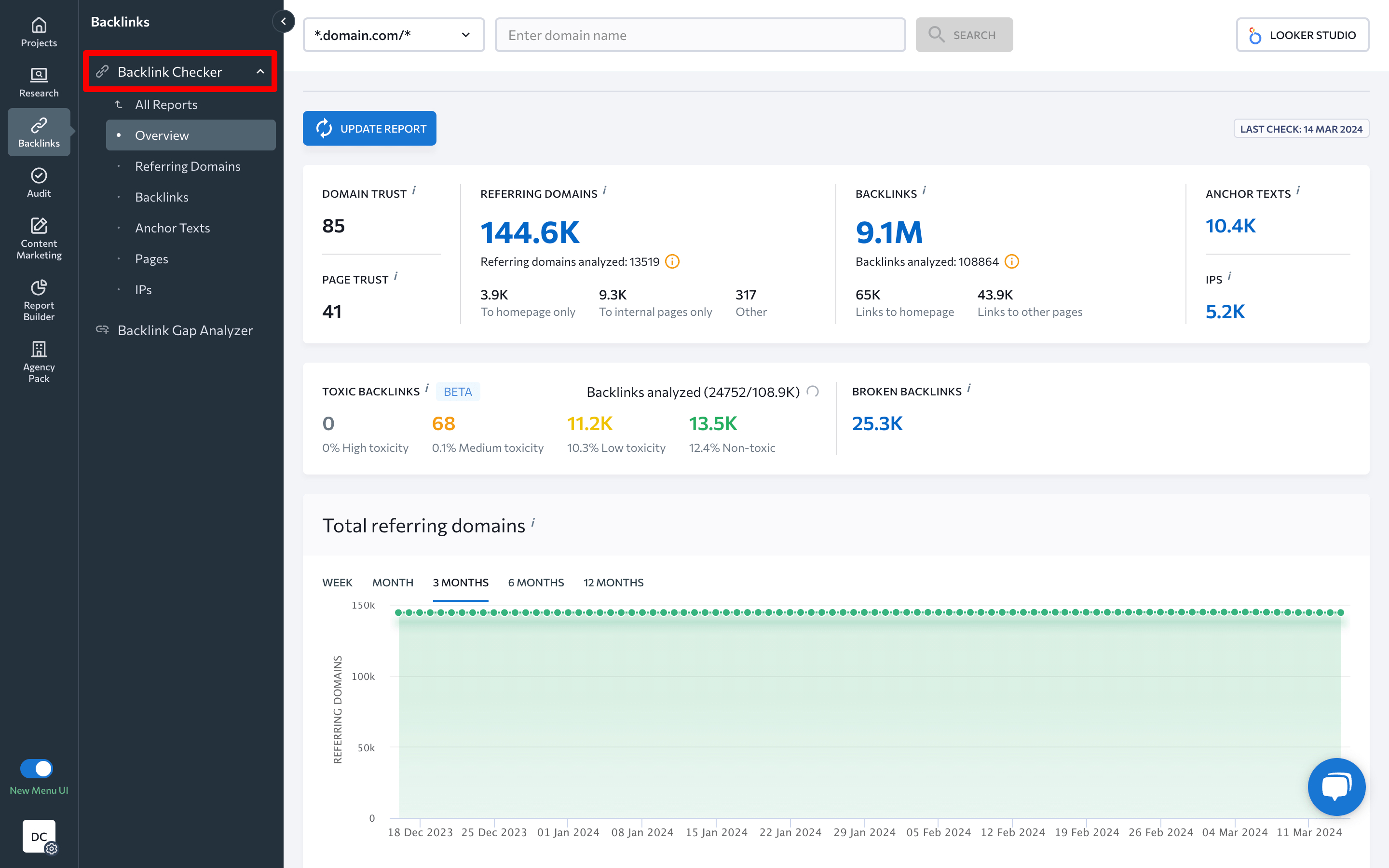
- Keyword Rank Checker: This is another great tool to use to see if your tasks have yielded sufficient results. Since the main goal of SEO is to boost your website’s ranking in search results (thereby increasing traffic and boosting conversions), you’ll want to use Keyword Rank Checker, as it monitors the outcomes of completed tasks. SE Ranking lets you track your website’s rankings for specific keywords across different search engines and locations. With it, you can track keyword positions over time, assess progress in rankings and traffic compared to competitors, etc.
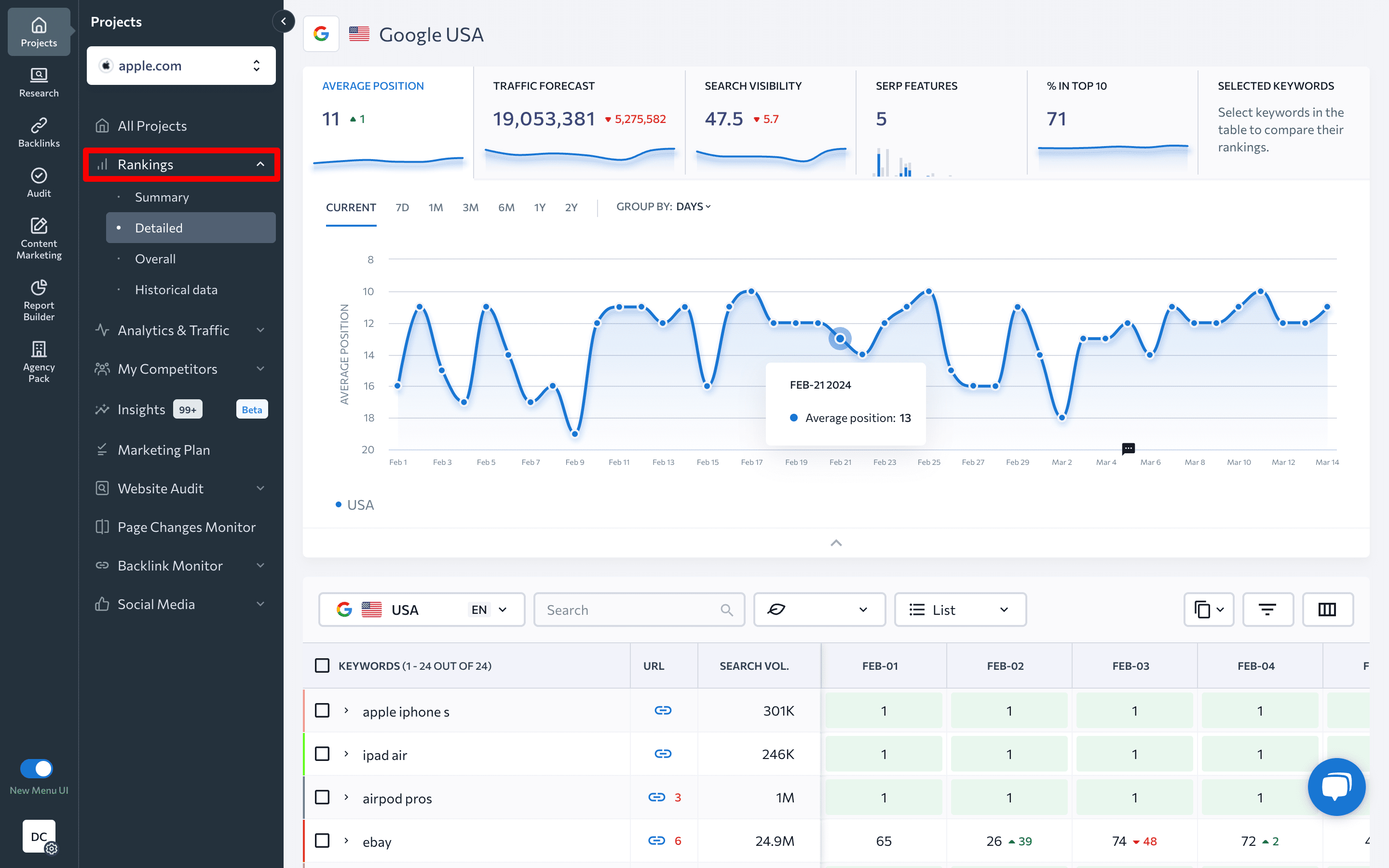
- Marketing Plan: Outline your site promotion strategy with more than a document. This tool is an interactive version of SE Ranking’s SEO roadmap. You can find a list of all main SEO tasks with detailed descriptions here. The tool lets you set task complexity, assign responsibility and deadlines, track progress and add comments. The most convenient aspect is that you can directly access SE Ranking’s tools to perform these tasks from. You can also download this plan in PDF format.
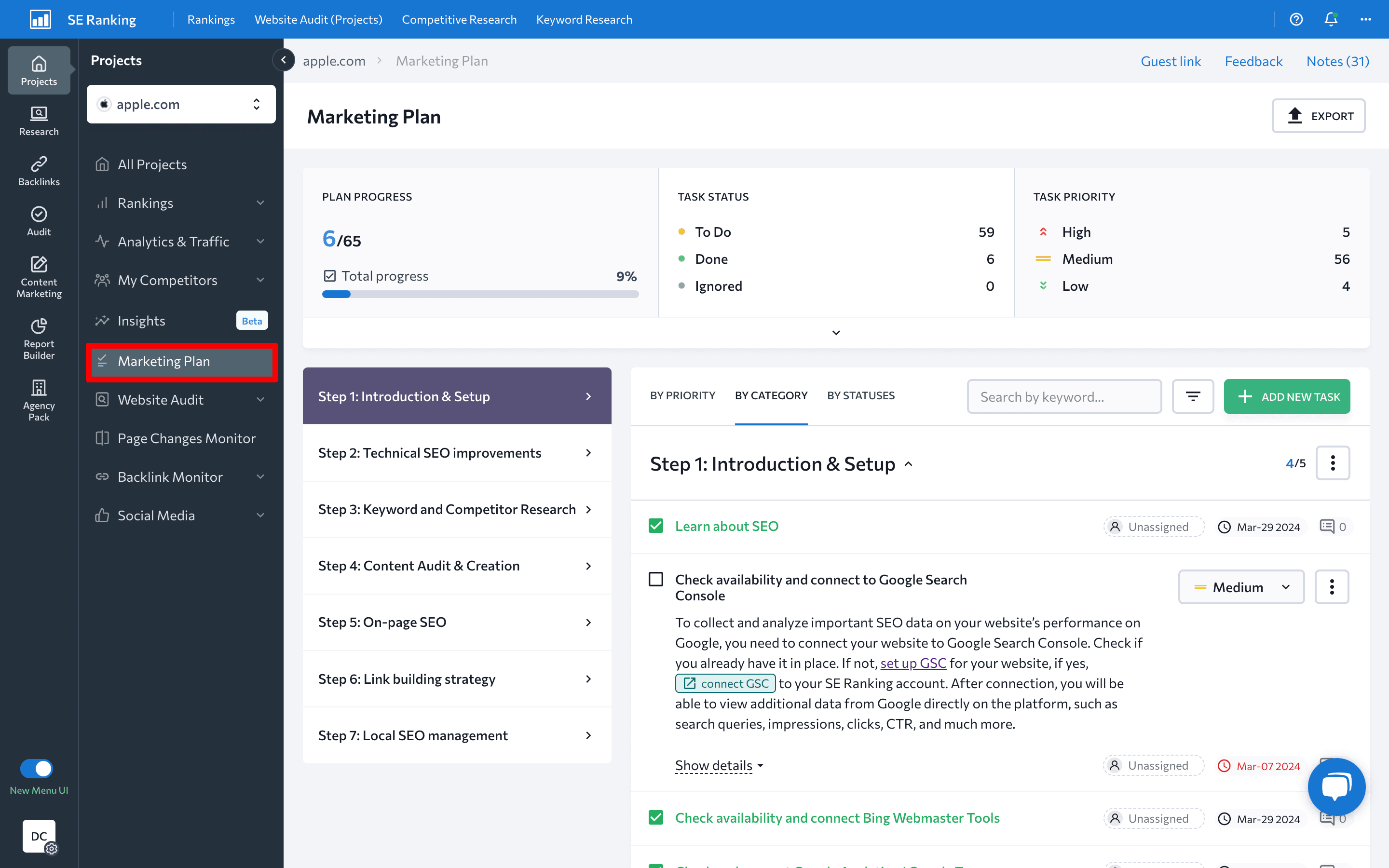
Wrapping up
The bottom line? Without organizing all of your initiatives, you can’t achieve your SEO goals. To avoid work chaos and make executing tasks as effective as possible, you need to establish a roadmap for SEO.
Filling it out and constantly updating it can require time and effort, but this pays off when you see how clearly and efficiently all tasks have been completed.
That being said, consider using the recommended tools and strategies listed above to create a solid roadmap. Don’t forget to use our SEO roadmap template to save time.

